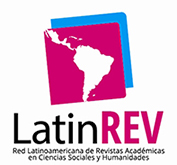Tutoring on the way to university
Keywords:
Tutoring, Secondary Students, Accompaniment, Inclusion, University Extensión
Abstract
Tutoring is a strategy that has become a polysemous concept that has a meaningaccording to the place and educational level where it is developed. In Argentina, in the20th century, there was an expansion in enrollment at all educational levels that made thedifferences more marked, and institutions had to respond to various difficulties. There isa process that is known as “exclusionary inclusion” since although the university opensits doors, it makes no attempt to retain its students. Tutoring became a support device toaddress these problems. The “Universitarios por más Universitarios” program is a tutoringsystem that complements the “Nicolás Avellaneda” scholarship, which is intended forstudents in the last year of secondary education in public schools in the south of thecity, who stand out for their high grades and for presenting socioeconomic vulnerability.This program is distinguished by personalized support provided by a tutor who is anadvanced student and/or recent graduate of the University of Buenos Aires. These tutorshave developed skills that have allowed them to adapt to university life and it is necessaryto transmit them to the young scholarship holders so that they can access the higherlevel in better conditions. General and personalized activities are proposed, designedand agreed upon in a Tutorial Action Plan. In addition, the tutor remains attentive toacademic difficulties. In conclusion, the population that enters the university for the firsttime imposes a series of demands since it is not enough to open the door and enroll them,but it is necessary to make room for them, physically and symbolically, so that they canstay, go forward and finish their studies. Tutoring systems like the one we have shown canbecome central devices for that objective.
Published
2024-12-30
How to Cite
Hofferlen, G., Zaobornyj, T., & Fager, L. (2024). Tutoring on the way to university. Redes De Extensión, 1(11), 152-170. https://doi.org/10.34096/redes.n1.16601



.png)
